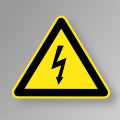How to switch high-power devices from USB
 Numerous automation applications require to switch on and off high power appliances. For instance, in the home automation domain, you may want to automatically switch on a 3KW electric heater or boiler. The problem is that it's nearly impossible to find USB-driven relays commuting such a high power. We present today our new solution to this issue: the Yocto-MaxiCoupler.
Numerous automation applications require to switch on and off high power appliances. For instance, in the home automation domain, you may want to automatically switch on a 3KW electric heater or boiler. The problem is that it's nearly impossible to find USB-driven relays commuting such a high power. We present today our new solution to this issue: the Yocto-MaxiCoupler.
| No comment yet | Read more... |
Relay and inductive loads
 You probably noticed that many manufacturers, such as Yoctopuce, advise against the use of electro-mechanical relays with inductive loads. Such use would lead to a quick aging of the relays. This week we will explain why and how to work around this issue.
You probably noticed that many manufacturers, such as Yoctopuce, advise against the use of electro-mechanical relays with inductive loads. Such use would lead to a quick aging of the relays. This week we will explain why and how to work around this issue.
| No comment yet | Read more... |
Yocto-USB connectors
![]() You have probably noticed that all Yoctopuce USB devices use micro-USB connectors which are the smallest available. But for some applications, a USB micro B plug is still too big. This week we will explain how to wire your Yoctopuce devices without USB plugs.
You have probably noticed that all Yoctopuce USB devices use micro-USB connectors which are the smallest available. But for some applications, a USB micro B plug is still too big. This week we will explain how to wire your Yoctopuce devices without USB plugs.
| No comment yet | Read more... |
USB cables: size matters
![]() One may think that USB cables are quite equivalent. Why spend tens of dollars on a so-called "top quality" cable while cheap cables are available from Internet. Well, that's a good question.
One may think that USB cables are quite equivalent. Why spend tens of dollars on a so-called "top quality" cable while cheap cables are available from Internet. Well, that's a good question.
| One comment | Read more... |
Soldering tutorial
![]() Almost all of the Yoctopuce products are conceived so that you can use them without needing a soldering iron. Nevertheless, they are also designed for you to connect them together in a very compact way and there, a soldering iron is necessary because there are contacts to solder. This is the case, for instance, when you want to connect modules to a Micro-USB-Hub. We realized that a large number of our clients didn't feel at ease with a soldering iron. We therefore decided to offer you a short tutorial.
Almost all of the Yoctopuce products are conceived so that you can use them without needing a soldering iron. Nevertheless, they are also designed for you to connect them together in a very compact way and there, a soldering iron is necessary because there are contacts to solder. This is the case, for instance, when you want to connect modules to a Micro-USB-Hub. We realized that a large number of our clients didn't feel at ease with a soldering iron. We therefore decided to offer you a short tutorial.
| One comment | Read more... |


